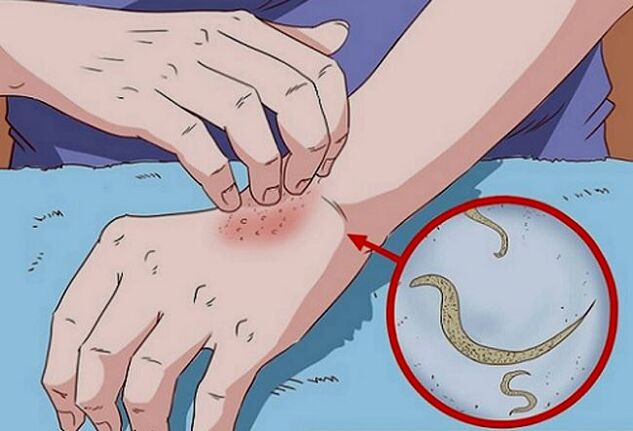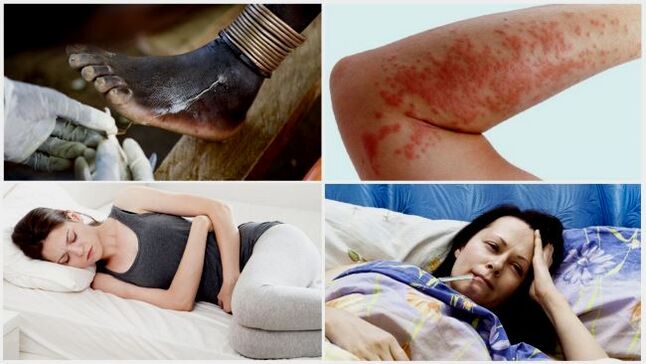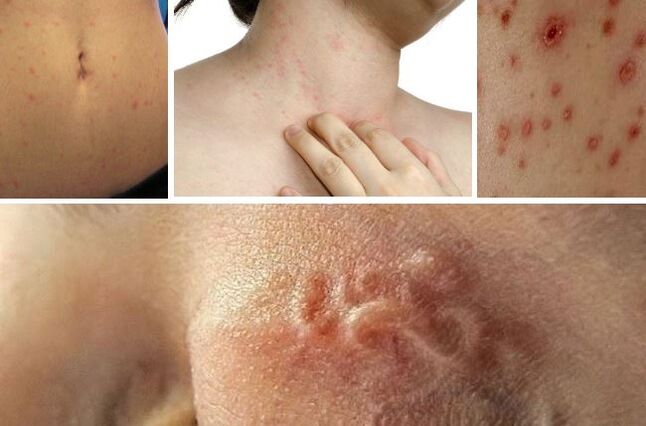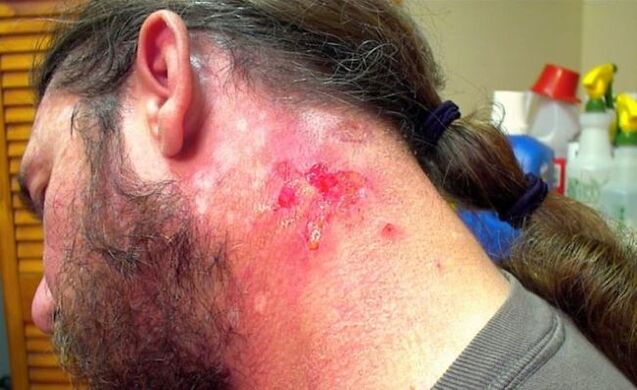Subcutaneous parasites that live in the thickness of human skin destroy it and cause inflammation. They can infiltrate other organs from the main site of "deployment" and cause serious disease. Most subcutaneous worms are found in southern countries, and the average person can get them while on vacation or on business trips.
The danger of a subcutaneous worm invasion is that it is asymptomatic during the incubation period, which can last for several years. This can then interfere with treatment and reduce its effectiveness.

What are subcutaneous parasites
Worms not only affect a person's internal organs, but also his skin. Entering its thickness, they disrupt the epidermis, feed on cells and defecate. Subcutaneous worm waste can cause poisoning because they contain toxic substances. The longer the worms were under a person's skin, the more pronounced the symptoms of the invasion.
Subcutaneous worms cause many diseases because they affect the body's immune and lymphatic systems. For example, parasites can trigger the development of elephantiasis -- elephantiasis. It interferes with the circulation of lymph in the body. This results in increased limb volume and its disfigurement. In the final stage, the affected organ is covered with ulcers and necrosis develops.

Human worms that live under the skin include:
- Dirofilaria nematodes. Causes heartworm disease. Physical infection occurs through the bite of blood-sucking insects: lice, fleas, ticks, which are the vehicles for the transmission of larvae from one host to another. Adults can reach lengths of up to 30 cm. The reproduction process takes place at the thickness of the skin, and the female then puts the microfilariae into the bloodstream.
- Filaria. Causes filariasis. They are parasitic roundworms. An adult can reach almost half a meter, while the body diameter does not exceed 0. 3 mm. Carriers of filariasis are blood-sucking insects that transmit parasite larvae from one host to another.
- Cattle bug larvae. A person can cause the development of cysticercosis. Infection occurs through the gut, where the parasite eggs penetrate with water, food, and dirt. Then, under the influence of gastric juices, their shells dissolve - and the larvae come out. They are then carried throughout the body along with the bloodstream.
- Schistosoma schistosomes. It is called schistosomiasis. An adult can reach 2 cm in length. Reproduction occurs by larvae infiltrating the body with water - the cercariae.
Main manifestations and treatment
If a person has parasites under the skin, this is first reflected in its condition: sagging, color changes, scarring and microcracking. This is because "guests" damage the skin, feed on cells and poison waste.

Symptoms of worm invasion caused by subcutaneous parasites in humans:
- allergic rash;
- cough;
- decrease in immunity;
- itching;
- peeling, redness of the skin;
- appetite problems;
- joint and muscle pain;
- sleep disorder;
- irritability;
- indifferent.
Skin parasites on the patient can lead to dysfunction of the entire body: anemia, dysbacteriosis, etc.
Treatment of parasitic diseases is selected individually. The choice of method is influenced by the degree of damage to the body, symptoms and type of pathogen. In some cases, in addition to medication, surgery may be required to remove the worms from under the skin or even from the entire affected organ.
In addition to antihelminthic drugs, antihistamines, vasoconstrictors are also used. If the inflammation is caused by worms that live under the skin, antibiotic treatment is required.
You should not try to get rid of worms living under the skin on your own with traditional medicine help - as practice has shown, they are ineffective and can harm human health.
Symptoms of Filariasis
The subcutaneous worms that cause the disease -- filarial worms -- emerge in humans after being bitten by infected blood-sucking insects. Tropical and subtropical countries have recorded the highest number of cases.
These human subcutaneous worms are able to live in the human body and do not emerge for long: the incubation period of the disease can last up to 7 years. This makes diagnosis difficult.

Symptoms and manifestations of invasion develop gradually as the parasite grows under a person's skin and affects surrounding tissues. The most common manifestations of filariasis include:
- measles;
- itching;
- wart;
- eczema;
- There are small lumps under the skin.
Fever, general weakness, headache, and lethargy may occur as the disease progresses.
Filariasis treatment should be done in a hospital. For drug deworming, use antiparasitic drugs. The effectiveness of treatment is monitored with blood tests. Without help, the patient undergoes surgery to restore lymphatic outflow from the affected organ.
Cysticercosis and Schistosomiasis
Tapeworm larvae cause cysticercosis. This worm is characterized by its high survivability: it is enough for one parasite to enter the human body, it quickly develops into an adult worm, and then begins to reproduce.
This feature makes the disease difficult to treat - if the head part remains after the worm is surgically removed, the parasite will grow again. Although the adult tapeworm resides in the human gut, its larvae spread through the bloodstream throughout the body, including under the skin. Subsequently, they can stay there for a long time - from 5 to 30 years.
If you have cysticercosis, where the worms become entangled under the skin or in the muscle tissue, for a person, the disease is asymptomatic. However, the location of the parasite can be determined by a tumor-like tumor that will rise above the skin. Palpate the nodule and confirm that it is hollow inside. The skin on the shoulders, the upper part of the chest, and the palms often become the favorite places for tapeworm larvae.
For subcutaneous cysticercosis, medication is not administered, and patients should be administered under the supervision of a physician. This is because when the parasite dies after using an antiparasitic agent, toxins start to enter the body. In turn, they can produce strong allergic reactions.
Schistosoma larvae and cercariae cause human schistosomiasis. Infection occurs through water. The first symptoms of worms under the skin appear 10-15 minutes after invasion. This is because the worms under the skin secrete large amounts of their own secretions, which can cause a toxic allergic reaction in humans.
First performance:
- severe itching;
- measles;
- rash.
Then there is a quiet period, after which (1-2 months later) the acute phase of schistosomiasis begins, which indicates neglect of the disease:
- fever;
- nocturnal hyperhidrosis;
- measles;
- dry cough;
- Changes in blood quality components.
Currently, treatment of schistosomiasis is limited to the use of 2 anthelmintics. In the acute phase of the disease, steroids, antihistamines, anti-inflammatory drugs are also used.
Heartworm and Morjilon virus
The two diseases have similar symptoms and some differences. Patients with heartworm disease will find a small nodule under the skin of the body that moves when palpated. This indicates that the subcutaneous worms have become entangled in the body. The same invasion performance was observed with Morgellon virus.

The essential difference between the two parasites is that heartworms do not disturb their hosts: the bubble under the skin does not cause discomfort, it appears and disappears from time to time. The worms live in the arms, legs, near the eyes, nose, chest, male - genitals. If the dirofilariae lurk under a person's skin for a long time, then under the influence of the toxin, his body temperature will rise and he will feel weak.
With Morgellon virus, the skin that the worm invades can experience severe itching. In the absence of medical attention, bleeding wounds, eczema, can appear quickly. This increases the body's risk of contracting other diseases several times over.
The best treatment for parasites is surgical removal.






































